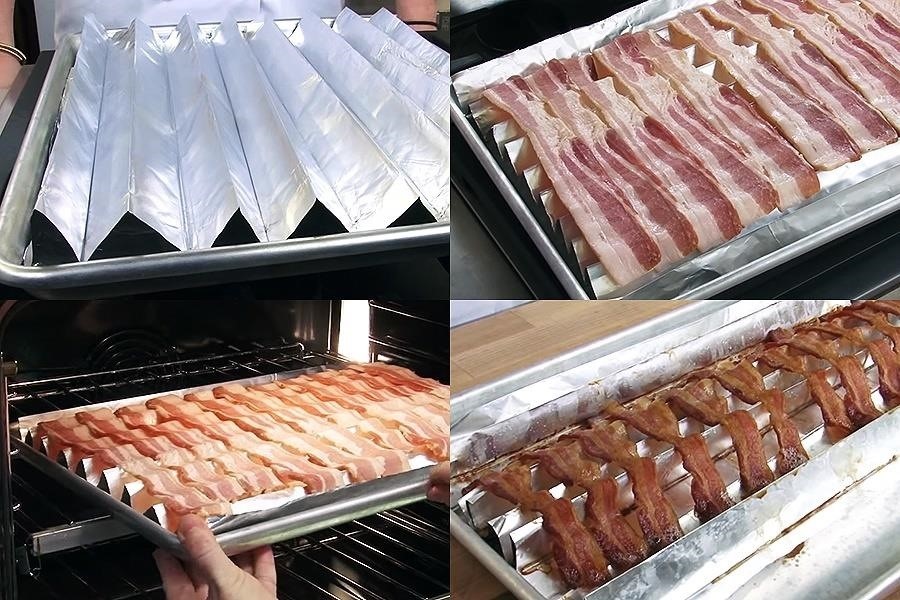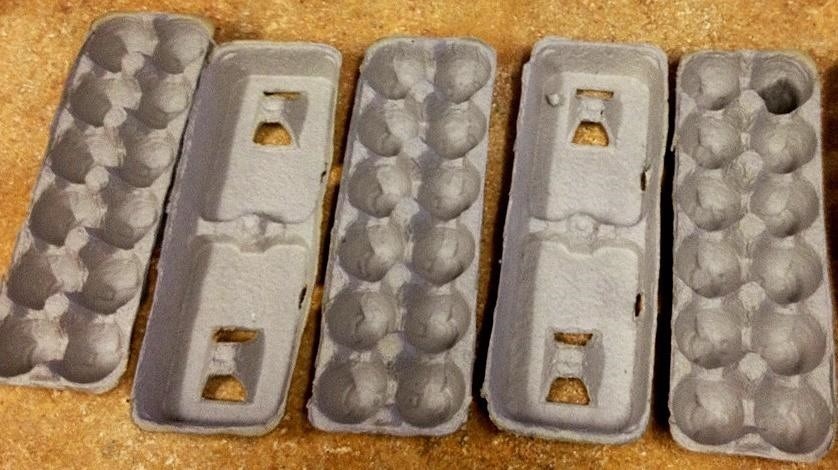4 INGENIOUS Uses for Aluminum Foil!
Aluminum foil is such an asset to cooking and baking. Lining sheet pans, packets for the grill, and storage in the fridge are just a few of the uses that aluminum foil can have in the kitchen. But can cooking with foil can have dangerous consequences? For me, there's always that lingering concern. So I researched the subject. Here's what I found out from various online health sites (my favorites being www.healthline.com and www.foodnetwork.com's "Healthy Eats"):

While most of our aluminum intake comes from food, studies do show that aluminum foil, cooking utensils, and containers can leach aluminum into our food.
This means that cooking with aluminum foil may increase the aluminum content of our diet. However, there are a few things that affect the amount of aluminum that passes into our food when cooking with aluminum foil:
- Temperature: Cooking at higher temperatures (wrapping cold or cooled foods in foil for storage does not lead to leeching of any aluminum)
- Food choices: Cooking with acidic foods, such as tomatoes, cabbage and rhubarb
- Seasonings: Using salts and spices in cooking
And then I went to snopes.com, pretty much the final word when it comes to so-called "facts." Here's how they answered the ever-present "fact" that cooking with aluminum foil puts you at risk for Alzheimer's:
"Sensationalist stories about how cooking with aluminum foil could spur the onset of Alzheimer's rely on a number of untested assumptions that sometimes strain credulity. The bottom line? The claim is mostly false."

I think the really helpful thing current research has found is that it's the regular use of aluminum foil in cooking that could be harmful to health. In other words, daily cooking or baking with it might not be the best. But studies show occasional use isn't a concern. (If you want to talk about proven risks for developing Alzheimer's, we could look at DIET-sugar and trans fats, for instance! But that's a topic for another article.)
That said, I'll leave it up to you to decide if the stuff has a place in your kitchen. But I vote for it because there are hundreds of ways it makes life a whole lot easier. First, though, let's start with how to get it out of the box efficiently.
Most brands have end tabs that make for easier dispensing. You might already know this, but after talking to lots of neighbors I found few knew they were there. Look for the perforated triangles on the side of each box and punch them inwards so they hold each end of the roll in place. This prevents the tin foil from falling out of the box and bouncing all over the place when you try and unravel a large sheet.

Now that we know how to easily get it out of the box, consider these cool ideas:
Make a DIY roasting rack for tastier, healthier bacon. Cooking bacon in the oven is a no-brainer. It's even better if you can cook it on something elevated so it can get crispier and doesn't soak up its own grease. However, if you don't have a roasting rack handy, you can simply create one by crimping a folded-over sheet of heavy-duty aluminum foil. Bake on top crimped foil at 400 degrees (10 to 15 minutes) for crunchy perfection. (This tip, which originated from America's Test Kitchen, also works with other light foods like French fries.)

Make Cookie Cutters & Custom-Shaped Cake Pans. Occasionally you may want to make cookies or cakes in special or unique shapes, but you didn't have the forethought to order the pans or cookie cutters beforehand (or you just don't want to go to that expense or don't have the space for more stuff). Let heavy-duty aluminum foil meet your needs.
For easy-to-make cookie cutters, for instance, all you need to do is draw a pattern, fold over aluminum foil until it's the proper thickness, shape the foil, and staple it. Eureka-you have unique cookie cutters that you can even reuse!

Create an emergency ice tray. I like to make large batches of chicken and beef stock and freeze in single-serving cube portions. I also like to freeze very ripe, pureed fruit for later use in smoothies, also in single-serve cube portions. But I don't like having to store the many ice cube trays needed for this.
So I just turn to the bottom halves of a few saved egg cartons and line them with aluminum foil. The trick, though, is getting it smooth-the more wrinkles means it's harder to get the frozen stuff out once it's frozen. (Keep in mind that this is an emergency measure-an egg carton and tinfoil ice tray is not a sturdy tool that you can keep reusing.)

I could go on and on with aluminum foil ideas, but I'll close with one last suggestion-a non-food idea that is absolutely ingenious!
Make wrong-size batteries the right size. If you've got a junk drawer full of batteries and yet never seem to have the right one on hand, take heart, aluminum foil comes to the rescue yet again. Simply fold up/wad enough aluminum foil to make up the difference between the end of the battery and where the negative terminal connects.
Be aware, though, this is not a long-term solution. It's for emergencies only, since smaller-than-required batteries + tin foil = potential for sparks and fire. Use with caution and only when necessary. (This can also be used to fix loose connections, but take foil out when not in use.)
- www.food-hacks.wonderhowto.com
- www.snopes.com
- www.cookiwww.wellnessmama.com eandkate.com
 Alice Osborne
Alice Osborne
Weekly Newsletter Contributor since 2006
Email the author! alice@dvo.com
